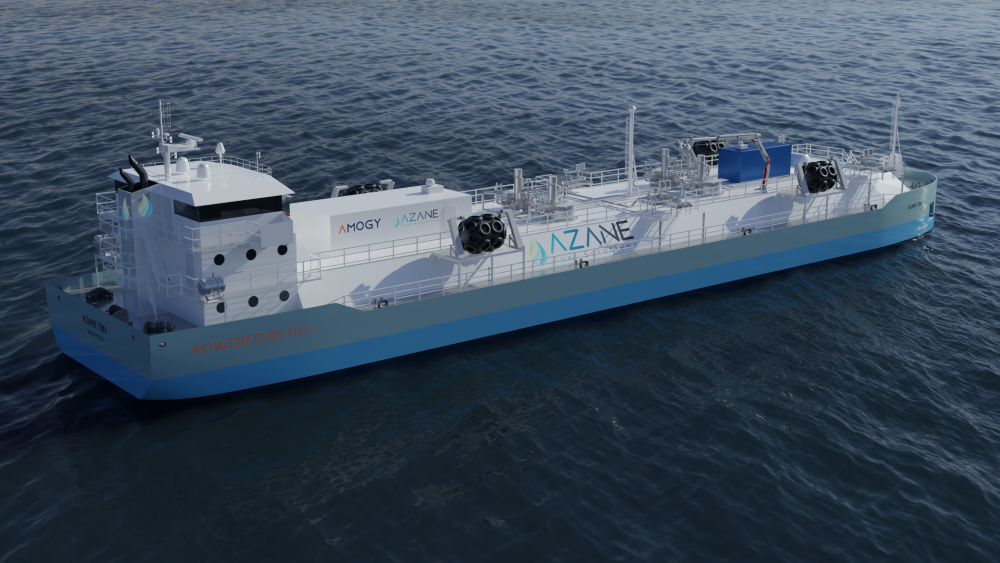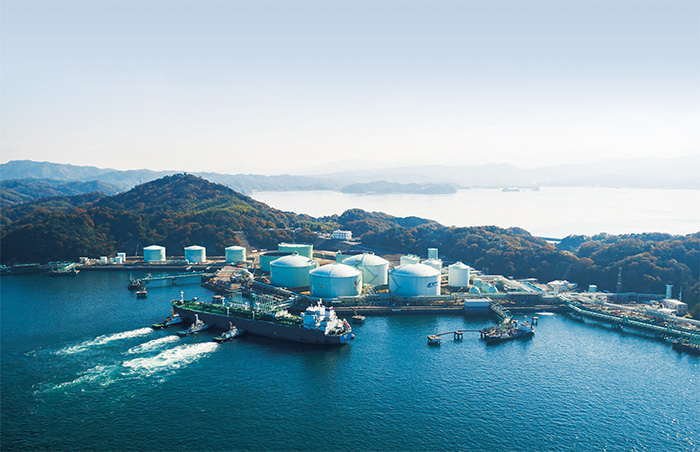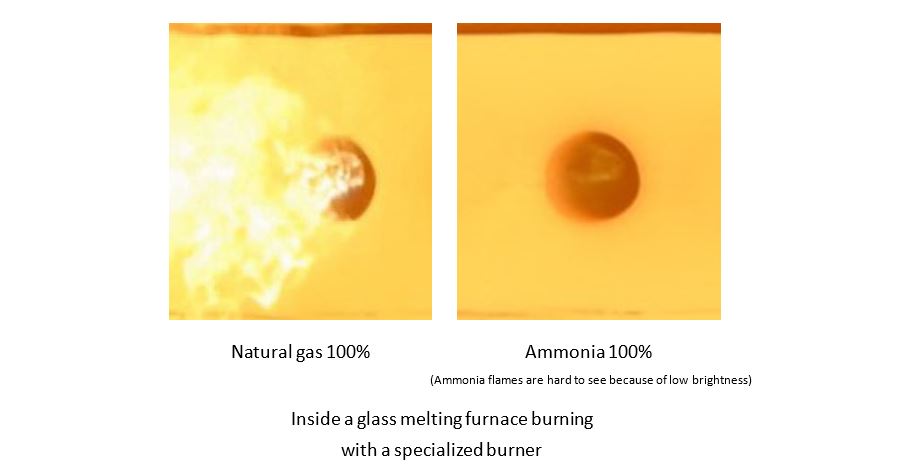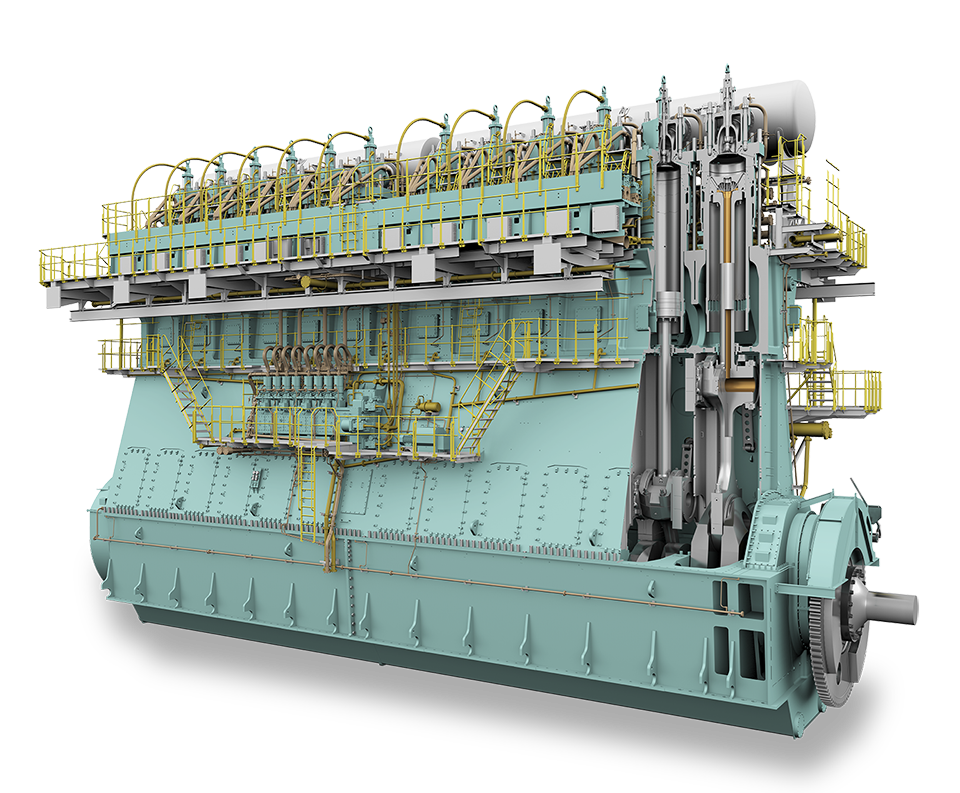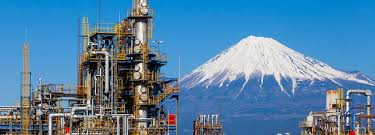Wärtsilä Gas Solutions will now provide the ammonia fuel supply and cargo handling systems for all six of EXMAR’s dual-fuel vessels being built in South Korea. Meanwhile, Amogy and Mitsubishi have completed concept designs for two onboard systems: a powertrain combining ammonia cracking and hydrogen fuel cell for ships, and a hydrogen supply facility to provide hydrogen as pilot fuel to an ammonia-fueled engine.
Content Related to Mitsubishi
Idemitsu, Mitsubishi & Proman: US ammonia for the Japanese market
CCS-based ammonia produced in the USA by Idemitsu, Mitsubishi and Proman is expected to hit the Japanese market by 2030, targeting multiple end uses.
Amogy & Azane to develop ammonia-fueled ammonia bunker barges
Amogy & Azane Fuel Solutions will explore the use of Amogy’s ammonia-to-power system on board Azane’s ammonia bunker vessel concept. In Norway, Amogy has announced two new initiatives: one with Green Ships and Bourbon Horizons to deploy its propulsion system on a series of new Platform Service Vessels, and another to cooperate on supply chain development with ammonia fuel producer Hy2gen. Amogy, Mitsubishi and SK Innovations have also announced a new partnership to explore the large-scale deployment of Amogy’s ammonia cracking technology in Japan & Korea.
Namikata Terminal to be repurposed into an ammonia-ready clean energy hub
Led by Mitsubishi, a new seven-member council will seek to transform Namikata Terminal in southern Japan into an ammonia-focused clean energy hub. The hub will handle over 1 million tonnes of ammonia annually, receiving imports from production hotbeds such as Corpus Christi & Lake Charles on the US Gulf Coast.
Ammonia fuel for glass production demonstrated in Japan
Asahi Glass Corporation announced it has successfully used 100% ammonia fuel to produce architectural glass over two days of testing at its Yokohama Technical Center, with NOx emissions below environmental thresholds. The news follows successful ammonia co-firing tests to produce cement clinker by Mitsubishi UBE Cement Corporation.
New marine engine collaboration, safety systems and key AiPs awarded
A new MoU between WinGD and Mitsubishi Shipbuilding will see the deployment of WinGD’s X-DF-A ammonia-fueled engines to a range of vessels. In Norway, Wärtsilä has unveiled a safety system designed for continuous onboard monitoring of ammonia leaks, featuring a staged combustion process to deal with accidental releases. And classification society DNV has awarded AiP to two significant ammonia-fueled vessel designs: the MS NoGAPs, and Viridis Bulk Carriers’ short sea bulk carrier.
Establishing a renewable ammonia supply chain from Thailand
Mitsui OSK Lines, Mitsubishi, Chiyoda and the Electricity Generation Authority of Thailand will work together to build a clean hydrogen & ammonia value chain, with production based on renewable energy generation in southern Thailand. The MoU was signed on the sidelines of the official launch of the Asian Zero Emissions Community: a new region-wide initiative to drive the energy transition in Asia.
More ammonia energy giants head for the Gulf Coast
RWE, LOTTE, Mitsubishi will join forces to jointly develop a large-scale clean ammonia production & export project in the Port of Corpus Christi, Texas. At full size, the facility will produce 10 million tonnes per year of “green” and “blue” ammonia combined, to be exported to Europe and Asia. Also on the Gulf Coast, Linde will build, own and operate a CCS hydrogen & nitrogen production plant to supply gas feedstock to OCI’s world-scale ammonia facility in Beaumont, Texas.
Building hydrogen and ammonia value chains in Indonesia
Indonesia’s state-owned fertiliser manufacturer will join forces with Mitsubishi Corporation to explore the feasibility of hydrogen & ammonia supply chains in the country: both renewable and CCUS-based. The new partnership aims to reduce coal utilisation at existing thermal power plants via co-firing with ammonia, helping Indonesia to meet its emissions reduction targets.
The Ammonia Wrap: Haldor Topsøe and Aquamarine to deploy solid oxide electrolysis, green ammonia to carry hydrogen for South Korean steel, and Namibia's national green ammonia strategy
Welcome to the Ammonia Wrap: a summary of all the latest announcements, news items and publications about ammonia energy. This week: green ammonia from Haldor Topsøe and Aquamarine, "Transhydrogen Alliance", Origin Energy signs deal with Korean steel maker POSCO, Japanese electric utilities move towards ammonia, new funding for CF Industries low-carbon fertiliser in the UK, Japanese partners to study Indonesian blue ammonia output and Namibia's national hydrogen & ammonia strategy.
METI Forms Ammonia Energy Council
Last week, Japan’s Ministry of Energy, Trade, and Industry (METI) announced the formation of a council to work on the implementation of ammonia as an energy commodity. The announcement came on the same day as a speech by Prime Minister Yoshihide Suga in which he established 2050 as the date certain for Japan to achieve carbon-neutrality. That was Monday October 26, 2020. The council held its first meeting on Tuesday October 27. The Council consists of four entities from the public sector and ten from the private sector. Members include companies that have previously been identified with the development of ammonia energy systems, including EPC firm JGC, capital goods manufacturer IHI, electric utility JERA, and shipping company NYK Line. The membership also reflects what appears to be the group’s central mission: positioning Japan as ammonia energy’s global leader via the dissemination of technology and the development of supply chains.
Green Ammonia Consortium: A Force for Ammonia Energy
Japan’s Green Ammonia Consortium, an industry body dedicated to building “a value chain from supply to use of CO2-free ammonia,” launched its Web site on December 5. The site features plenty of interesting content, but most significant may be the roster of members. Eighty seven companies, public organizations, and individuals are listed. Taken together they represent a significant force for ammonia energy implementation in Japan and beyond.
Green Ammonia Consortium: Bright Prospects in Japan for Ammonia as an Energy Carrier
In the last 12 months ... In July 2017, 19 companies and three research institutions came together to form the Green Ammonia Consortium. Before this development, it was unclear whether ammonia would find a significant role in Japan’s hydrogen economy. In the wake of this announcement, however, ammonia seems to have claimed the leading position in the race among potential energy carriers.
Japan-Brunei MCH Energy Carrier Demonstration
Chiyoda Corporation, the multinational chemical engineering firm that is arguably the leading proponent of the methyl cyclohexane (MCH) method of hydrogen transport, will start work this month on a project to demonstrate MCH technology in a real-world context. As reported in a July 27 company press release, the project will involve the transportation of hydrogen from Brunei to Japan in what the company states is "the world's first global hydrogen supply chain demonstration project" -- an assertion that many ammonia energy proponents will no doubt find preposterous.


